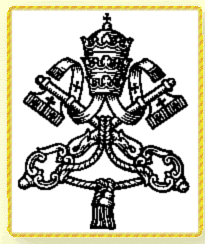Bishop Thomas Tobin from the Diocese of Providence has written an excellent article on the liturgy and the liturgical reform we are awaiting.
......
A long period of years must past before the liturgical edifice, which the mystical Spouse of Christ has formed in her zeal and understandingto proclaim her piety and faith, will again appear splendid with dignity and harmony, cleansed of the accumulations of age.
These words of our late Holy Father provide an appropriate backdrop as the Diocese of Providence continues the process of studying and implementing recent liturgical documents. These documents include Pope John Paul's Encyclical, Ecclesia de Eucharistia, the General Instruction of the Roman Missal and the Vatican's Instruction on the Eucharist, Redemptionis Sacramentum.
The implementation of these guiding documents in our diocese will not involve major changes since we are already, for the most part, faithfully following approved liturgical norms. Nonetheless, their implementation will require us to make some adjustments to a number of particular practices. Your pastors have received detailed information about these items and will explain them to you in the days to come.
As we approach this task of liturgical fine-tuning, however, there are three important points I'd like to make.
The first is that all the members of the Church - priests, deacons, teachers, lay ministers, members of the lay faithful - should be committed to carefully following required liturgical norms.
In his Encyclical Pope John Paul wrote: "These norms are a concrete expression of the authentically ecclesial nature of the Eucharist; this is their deepest meaning. Liturgy is never anyone's private property, be it of the celebrant or of the community in which the mysteries are celebrated." (#52)
Redemptionis Sacramentum continues the Pope's explanation: "priests who faithfully celebrate the Mass according to the liturgical norms, and communities which conform to these norms, quietly but eloquently demonstrate their love for the Church." (Introduction)
As the documents suggest, the observance of liturgical norms manifests the virtues of humility, obedience and reverence in approaching the sacramental mysteries of the Church. When priests (or other ministers) impose their own preferences on the liturgy they reveal a lack of proper understanding of the ecclesial nature of liturgy. Such a practice is an expression of unhealthy clericalism and a sign of disrespect for the pastoral rights and spiritual needs of others.
The second point is equally important, however. The faithful celebration of the liturgy requires much more than just a scrupulous observance of the rubrics. It has to be imbued with and oriented toward a prayerful Christian spirit.
As the Instruction explains: "A merely external observation of norms would obviously be contrary to the nature of the Sacred Liturgy, in which Christ himself wishes to gather his Church, so that together with himself she will be one body and one spirit." (#5)
And in the well-known and oft-repeated mandate of the Second Vatican Council: "mother Church earnestly desires that all the faithful be led to that full, conscious, and active participation in liturgical celebrations which is demanded by the very nature of the liturgy . . . In the restoration and promotion of the sacred liturgy this full and active participation by all the people is the aim to be considered before all else; for it is the primary and indispensable source from which the faithful are to derive the true Christian spirit." (Sacrosanctum Concilium, #14)
In other words, the celebration of the liturgy must be done in a context of prayer and with the goal of spiritual renewal. We shouldn't just do the gestures and rituals; we should understand their meaning. We shouldn't just recite the prayers; we should take them to heart. We shouldn't just talk about Christ in the liturgy; we should encounter Him and be transformed in His likeness.
The third and final point is that the liturgy, to be completely fulfilled, must be lived-out in a personal commitment to justice and love.
The Instruction insists on this point: "External action must be illuminated by faith and charity, which unite us with Christ and with one another and engender love for the poor and abandoned." (#5)
And Pope Benedict has been equally clear: "Eucharistic communion includes the reality both of being loved and of loving others in turn. A Eucharist which does not pass over into the concrete practice of love is intrinsically fragmented." (Deus Caritas Est, #14) In other words, authentic liturgy sends us into the world to live the Gospel of Christ, proclaim the Kingdom of God and serve the needs of others. Liturgy and love walk hand in hand. Love without liturgy runs the risk of becoming mere social work. Liturgy without love is sterile and unfulfilled.
It seems to me that these fundamental attitudes about liturgy are critical as the renewal of liturgy continues in the days to come. And indeed it will. In just a year or two, as the newly translated Roman Missal is introduced in our churches, we will be asked to become familiar with many new texts and prayers of the Mass. Without a doubt it will be a challenge, but also an opportunity.
You see, the renewal of the liturgy is a normal part of the Church's life in every age. Consider, for example, that the words about the need for liturgical renewal at the beginning of this piece are indeed from our late Holy Father - Pope Pius X in 1913!
Monday, May 22, 2006
Subscribe to:
Post Comments (Atom)










No comments:
Post a Comment